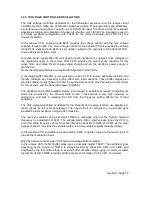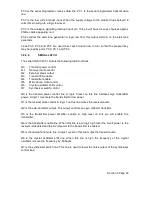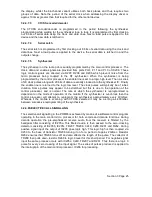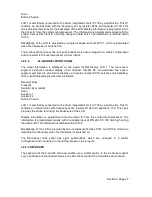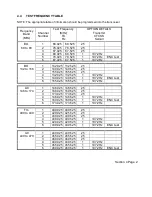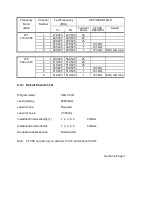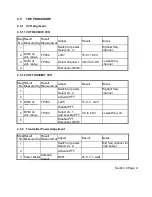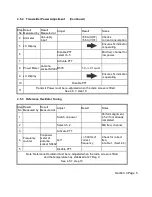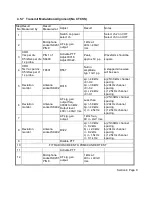
Port 1 of the control processor is primarily the serial control port which controls the various
serial control devices within the mobile.
P1.0 is the serial data line. This line may be used as either an input or an output depending on
which serial device the control processor is communicating with. It is configured as an output
when communicating with the display driver, CTCSS IC, serial latch, RF synthesizer and
writing to the EEPROM. It is configured as an input when reading from the EEPROM.
P 1.1 is the serial clock line. It is always configured as an output and is active whenever the
control processor is communicating with any of the serial devices.
P1.2, P1.3, P1.4, P1.5, P1.6 are the select lines for each of the serially controlled devices.
They are always configured as outputs. These ports are high whenever the associated serial
device is being addressed.
P1.7 is used to disable the outputs of the serial latch IC207during power up and power fail
conditions. It ensures that the devices controlled by IC207 are disabled for the duration of the
above conditions.
P2.0
External alarm input
P2.1
RF power detect
P2.2
Alarm power sense
P2.3
3rd party option toggle
P2.4
CTCSS encode RTB control
P2.5
Analogue signalling control
P2.6
Analogue signalling control
P2.7
Analogue signalling control
The external alarm input from SK203 pin 4 goes via R248, and bypass circuitry composed of
C235 and D204, to P2.0 of the micro controller. This pin is normally pulled up by R247 to a
logic high level. It must be grounded to activate the alarm.
P2.1 is the RF power detect input. This signal is derived from the radio board when logic low
indicates that RF power is present at the radio RF power amplifier.
P2.2 is the alarm power sense line. When the alarm is activated this line is used to determine
the state of the on/off switch in order that the correct display may be maintained.
P2.3 is a port which has been set aside for the controlling of items external to the control PCB.
When this function has been programmed this line will toggle on and off in response to the
activation of the relevant front panel button.
P3.0
Serial programming received data
P3.1
Serial programming transmit data
P3.2
Low volts interrupt
P3.3
Analogue signalling interrupt
P3.4
Alert tone generator control
P3.5
Keyboard column 1
P3.6
Keyboard column 2
P3.7
Keyboard column 3
Section 3 Page 22









